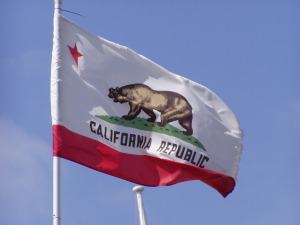Author: Jon Cieslak
When a law enforcement or regulatory agency—such as the Department of Justice (DOJ) or the Securities and Exchange Commission (SEC)—investigates potentially illegal business conduct, it may not be targeting just the company under investigation. Oftentimes, authorities are also targeting the company’s employees who engaged in the illegal conduct, and corporate officers and other employees are frequently indicted alongside their employers in antitrust and other cases. See, e.g., United States v. Hsiung, 778 F.3d 738 (9th Cir. 2014). Indeed, in 2015, U.S. Attorney General Sally Yates issued the so-called “Yates Memo” that reaffirmed DOJ’s commitment to seek “accountability from the individuals who perpetrated the wrongdoing.”
While the company typically hires outside counsel with experience defending the potential claims, one area that is sometimes overlooked is whether the employees involved in the investigation need their own lawyers. Employees may think the company’s lawyer represents them as well, but that is rarely the case and employees should be quickly disabused of the notion. Both the Supreme Court in Upjohn v. United States, 449 U.S. 383 (1981), and legal ethics rules compel corporate lawyers to clarify when they do not represent individual employees when conducting internal investigations. See, e.g., Model Rules of Prof’l Conduct R. 1.13(f).
So when does an employee need her own lawyer?
While there is no bright-line rule, considering some key questions can help you make the right decision.
First, is the employee a target of the investigation, or merely a witness? During an investigation, investigators will talk to many potential witnesses in addition to the individuals whom they suspect of illegal conduct. When confident that investigators believe an employee is only a witness to the potentially illegal conduct, the need for separate counsel is significantly reduced.
Second, does the employee face personal consequences as a result of her conduct? Consequences may include criminal penalties such as imprisonment or fines, suspension or loss of professional licenses, personal liability for civil damages awards, or employment consequences such as demotion or termination. While even a small chance of criminal penalties merits separate counsel, as the likelihood of any of these consequences grows, so too does the importance for an employee to have her own lawyer. Keep in mind, too, that individuals involved in some illegal conduct—such as an antitrust conspiracy—can be jointly and severally liable for all the harm caused by the conspiracy, so could face an enormous civil damages award even if their role was minimal. See Texas Industries, Inc. v. Radcliff Materials, Inc., 451 U.S. 630, 646 (1981).
Third, was the investigation initiated by a law enforcement or regulatory agency, or is it purely an internal investigation by the company itself? In general, separate counsel is less important in internal investigations. On the other hand, when the government is investigating, separate counsel can benefit both the employee and the company. Not only will the employee’s interests be better protected, separate counsel will also help insulate the company’s lawyers from potential disqualification and allegations of obstruction. Separate counsel is particularly important when an employee will be interviewed directly by law enforcement agents, who are more likely to trust a witness’s independent attorney.
Fourth, and most importantly, does the employee have any actual or potential conflicts of interest with the company and, if so, how severe are they? When both the company and the employee are targets of a government investigation, there will almost always be at least a potential conflict between them. A company usually has substantial incentives to cooperate with a government investigation, such as the potential for amnesty under the DOJ’s Leniency Program and credit for cooperating under the Sentencing Guidelines. To fully cooperate, however, the Yates Memo requires companies to “completely disclose . . . all relevant facts about individual misconduct.” Meanwhile, an employee involved in the conduct may want to seek immunity in exchange for testifying against the company or other individuals. Even less severe conflicts, however, can warrant separate counsel. If an employee disagrees with the company’s view of the facts or feels pressure to testify in a certain way, separate counsel may be needed to protect the employee’s interests.
 The Antitrust Attorney Blog
The Antitrust Attorney Blog












